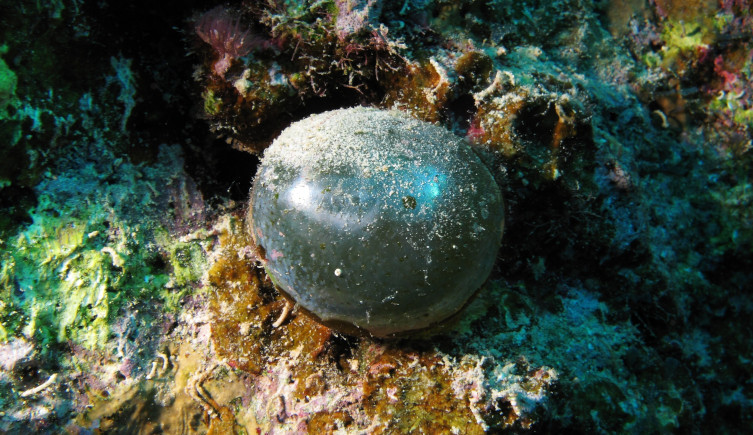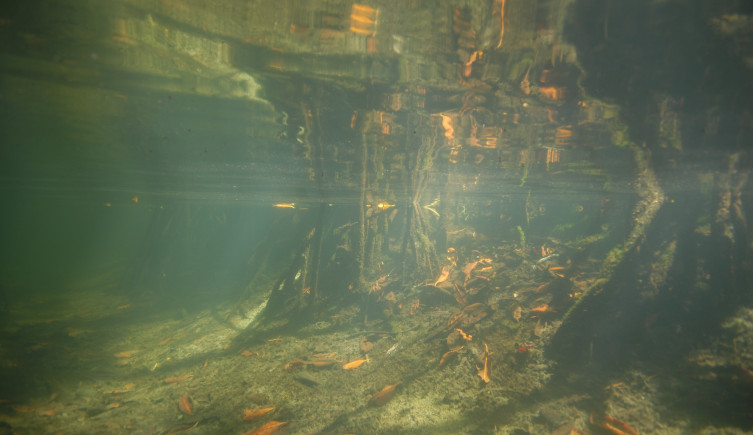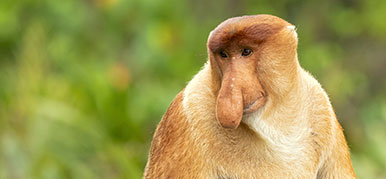The world's largest bacterium has been discovered amongst the mangroves of the Caribbean island of Guadeloupe.
Measuring over a centimetre long, Thiomargarita magnifica is over 5000 times bigger than the average microbe.

Thiomargarita magnifica can measure up to two centimetres in length, and is bigger than the theoretical limit of bacterial growth. Image © Tomas Tyml/The Regents of the University of California, Lawrence Berkeley National Laboratory
The world's largest bacterium has been discovered amongst the mangroves of the Caribbean island of Guadeloupe.
Measuring over a centimetre long, Thiomargarita magnifica is over 5000 times bigger than the average microbe.
An eyelash-sized bacterium is breaking records and boundaries as it redefines what single-celled life can be.
Thiomargarita magnifica is a titan of bacterial life. It is over 10 times bigger than the previous largest bacteriumopens in a new window and is large enough that it can be picked up with a pair of tweezers.
Dr Jean-Marie Volland, the lead author of a paper describing the new bacterium, says, 'Most bacterial cells are microscopic, and measure around two thousandths of a millimetre in length.'
'While there are some exceptionally sized bacteria which can measure several hundred micrometres, these remain within the theoretical limit of how large these organisms can grow. T. magnifica, however, is significantly above this limit.'
'When compared to most bacteria, it would be like a human encountering another human as tall as Mount Everest.'
As well as its enormous size, the newly described bacterium has also surprised scientists by how it stores its DNA. Most bacterial DNA floats freely around the cell, but T. magnifica's genetic material contained within compartments similar to those seen in animals and plants.
'These membrane-bound compartments represent a new type of bacterial organelle that we name pepins,' Jean-Marie adds. 'Until now, we thought DNA packaged inside an organelle was solely a feature of eukaryotic cells.'
'It is therefore a fascinating example of a bacterium which has evolved a higher level of complexity.'
The findings of the study were published in the journal Scienceopens in a new window.

Valonia ventricosa grows up to four centimetres in diameter, and is comprised of just one cell. Image © Alexander Vasenin, licensed under CC BY-SA 3.0opens in a new window via Wikimedia Commonsopens in a new window.
T. magnifica is a prokaryote, which is a form of life with cells very different from our own. Prokaryotes are generally single-celled and have no cell nucleus or other internal membranes.
This sets them apart from eukaryotes, which have a variety of membrane-bound organelles such as the cell nucleus, mitochondria and the Golgi apparatus. All animals are eukaryotes, as well as plants, fungi and related organisms.
As mostly single-celled organisms, prokaryotes tend to be very small. Without internal membranes, they rely on the process of diffusion, where molecules move from areas of high to low concentration, to obtain nutrients and metabolites to live.
Diffusion is only effective over microscopic distances, limiting how large prokaryotes can grow. Unicellular eukaryotes, however, can use their internal structure to overcome these limits.
Algae are the largest of these organisms, with some cells of Acetabularia acetabulumopens in a new window reaching up to 10 centimetres in diameter. Another algae, Caulerpa taxifolia, can reach as much as 30 centimetres longopens in a new window, but has multiple cell nuclei to allow this.
Like these organisms, T. magnifica lives in a marine environment. It was discovered by Professor Olivier Gros while he was searching for microbes in the mangrove sediments of Guadeloupe.
'Caribbean mangroves are characterised by high amounts of organic matter accumulating in and around the sediment,' Olivier explains. 'Their decay produces high amounts of sulphide which support a wide variety of sulphur oxidising bacteria.'
'While collecting samples, I found long white filaments attached to mangrove leaves. I brought them back to the lab and began to observe them. There was no evidence they were eukaryotic, and later genetic analysis revealed beyond doubt these organisms were bacteria.'
Further investigations have revealed that T. magnifica has a life unlike that of any other bacteria.

Thiomargarita magnifica lives on the border of seawater and sediment among mangroves. Image © Pierre Yves Pascal/The Regents of the University of California, Lawrence Berkeley National Laboratory
After examining T. magnifica, the researchers found that most of the cell is made up of a vacuole, a compartment filled with fluid. This pushes the typical cell components, such as cytoplasm and organelles, into a thin line around the edge of the cell which is believed to allow the bacterium to grow large while still being dependent on diffusion.
Within this layer were the pepins, which are membrane bound structures unlike those of other bacteria. These contained DNA and structures known as ribosomes, which use genetic material to build proteins, and appear to have a similar function to the cell nucleus of eukaryotes.
Like other species of its genus, T. magnifica's genome contains a large number of genes associated with sulphur oxidation and carbon fixation, suggesting it uses this chemical energy to survive. However, unlike its relativesopens in a new window it lacked most genes associated with nitrate metabolism.
This way of life also rules out the possibility of T. magnifica infecting humans, or other forms of animal life. It has developed a sedentary lifestyle and has its own anti-bacterial defences to survive in the environment.
'More than a quarter of its genome is dedicated to secondary metabolism,' co-author Prof Tanja Woyke explains. 'These genes can include bioactive compounds which may explain why we didn't find any bacteria on the outside of its cell.'
'Overall, these genes make up a significant part of its genome, which is 12 million base pairs long. This is not unheard of in bacteria but is within the upper range. It has more than half a million copies of its genome in a cell, which equates to three trillion base pairs and is a thousand times larger than the human genome.'
The scientists behind the study hope to investigate the bacterium more closely to answer the many questions that remain, such as its role in the ecosystem and the development of its extraordinary size.
To achieve this, it will be crucial to grow T. magnifica in a laboratory. This is likely to take a significant amount of time, as its relatives are known to take up to two weeks to divide fully. This suggests the larger bacterium could take even longer.
Senior author Prof Shailesh Date says that such research will help reveal more about how life as we know it has evolved.
'This project has really opened our eyes to the unexplored diversity of microbes,' Shailesh says. 'We're just scratching the surface, and who knows what interesting things we are yet to discover.'
'The study of biological complexity has a lot to offer our understanding of the tree of life, and in the future may allow us to produce interesting new physiologies and biochemistry.'

Just how weird can the natural world be?
Don't miss a thing
Receive email updates about our news, science, exhibitions, events, products, services and fundraising activities. We may occasionally include third-party content from our corporate partners and other museums. We will not share your personal details with these third parties. You must be over the age of 13. Privacy notice.
Follow us on social media